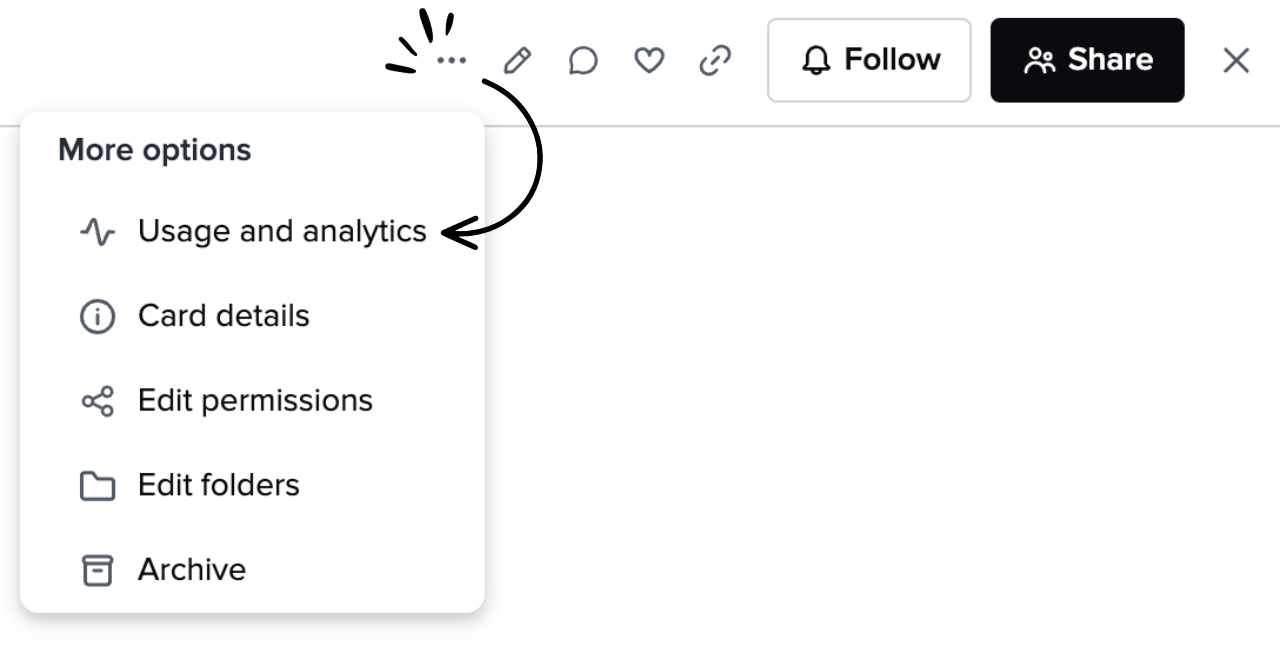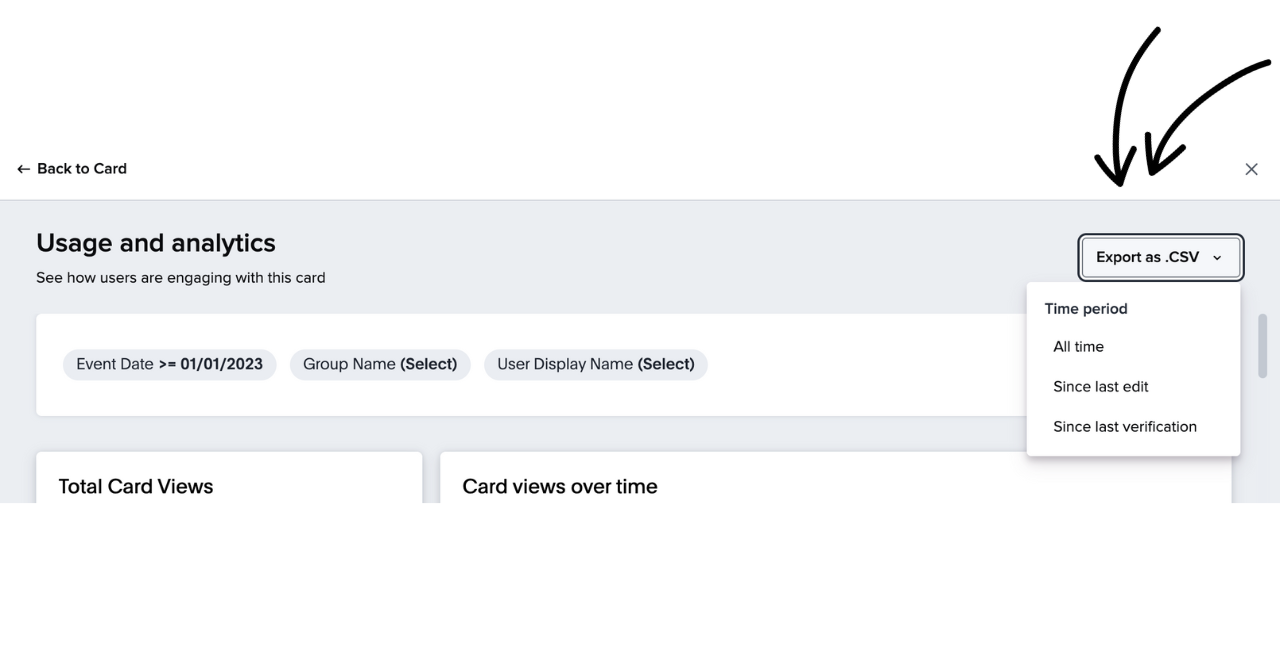Viewing Individual Card Usage Analytics
The Usage and analytics dashboard on each Guru Card gives Collection Owners and Authors valuable insight into how content is being used across the team. These insights can guide content strategy, help identify top-performing resources, and inform content updates or creation.
Access Required
- Admins: Access to all analytics across all Collections and users.
- Collection Owners: Access to dashboards for Collections they manage, including Card usage analytics.
- Page Owners: Can view dashboards for Pages they are assigned to.
- Knowledge Agent Owners: Can access Answers Analytics for their assigned Knowledge Agents.
- Viewers: Cannot view analytics dashboards. They can access Card usage analytics but cannot download results.
- Custom Roles can be set up with specific permissions. See Manage > Custom Roles.
Accessing Card usage and analytics
- Open the Card in Guru’s web app or browser extension.
- Click the ellipsis (⋯) menu at the top of the Card.
- Select Usage and analytics.
- To return to the Card view, click Back to Card at the top or click the X to close.

Using filters to customize your view
Filters at the top of the dashboard allow you to narrow data by:
- Event Date – Filter by specific timeframes (on, on or after, before, between).
- Group Name – Filter by a specific Group's activity.
- User Display Name – Filter by a specific user’s activity.
Understanding Card usage reports
Total Card views
- Displays the total number of views for the most recent week the Card was viewed.
- Shows percent change and total views from the previous week.
- Includes an area chart of weekly view trends.
Card views over time
- Combo chart showing monthly Card views (bars) and Card copies (line) in the selected timeframe.
Card usage by user (Admin or relevantcustom role access required)
- Table listing users who viewed the Card.
- Columns include:
- Display Name
- Total Views
- Follow status
- Favorite status
Favorites and follows over time
- Bar chart showing the number of times the Card was:
- Favorited
- Followed
- Tracked monthly over the selected timeframe.
Card usage by surface
- Line chart showing where users interacted with the Card (e.g., web app, extension, API).
- Helps identify where the Card is most accessed.
Card favorites
- Table listing users who favorited the Card and the date of favoriting.
- Shows first 1,000 rows by default.
Download full report as CSV.
Card follows
- Table listing users who followed the Card and the date they followed it.
- Shows first 1,000 rows by default.
Download full report as CSV.
Downloading Card usage analytics
- Click Export as .CSV to choose a time period:
- Card’s entire history
- Since last edit
- Since last verification

Downloading and scheduling report delivery
- Download individual reports as CSV files.
- Schedule the full dashboard for recurring email delivery.
Evaluating Card usage
Card usage data can be evaluated alongside other Guru analytics:
- Compare against Knowledge Usage analytics to see how the Card performs within its Collection.
- If the Card was used in an announcement, use Announcement insights to compare Group-level engagement.
- Review user interactions via the Group and User Drill-Down analytics dashboard.
Tip:To confirm if a user viewed a Card and marked it as read, use the Announcement feature.
Best PracticesUsing this data to tell a story:
- Sales/Support enablement – Discuss how high-performing reps use top-viewed Cards and share their strategies team-wide.
- Cross-functional alignment – Use frequently used Cards to inform Product and Marketing teams on frontline team needs.
- Onboarding and training – Review which onboarding Cards new hires are engaging with to ensure proper enablement and content coverage.
Updated 5 months ago
